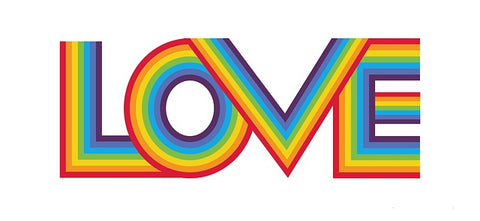LGBTQIA+ Definition and Resources

The number of commonly used terms to describe different romantic and sexual orientations and gender identities has evolved as more people have become more confident and empowered to be their authentic selves. LGBTQIA+ is the acronym that collectively represents individuals who identify as lesbian, gay, bisexual, transgender, queer, intersex, asexual, and/or another sexual or romantic orientation or gender identity. Unfortunately, there are many people who are unfamiliar with what some of these terms mean or what it means to be a member of the LGBTQIA+ community. With a lack of understanding, there often comes intolerance, fear, and misconceptions. As a result, LGBTQ+ people may face struggles accepting themselves or being accepted by others, which can lead to discrimination. Fortunately, there are many available resources that can provide support and information for those in the LGBTQIA+ community and those who need help better understanding them.
Lesbian
A woman who only feels attraction, usually both sexual and romantic, to other women
Gay
A person who is sexually and often romantically attracted only to people of the same gender. This term is most commonly used to describe men but is sometimes applied to same-gender-attracted people of any gender.
Bisexual
A person who is sexually attracted to two genders, usually including their own. The degree and type of attraction may vary between genders and at different times over their lifetime.
Transgender
A person whose biological sex at birth does not match their gender identity. Some people may undergo medical procedures or take hormones to align their physical appearance with their gender identity, but this is not required to be transgender.
Queer
Anyone who is not heterosexual, heteroromantic, and cisgender. People who are nonbinary, gender-nonconforming, or gender-fluid may also identify as queer. Although the queer community uses the term, it has historically been a slur, and not all LGBTQIA+ people embrace its use.
Questioning
Those who are in the process of questioning and discovering their sexual and/or romantic orientation or gender identity
Intersex
A person born with the physical and/or chromosomal traits of both sexes. Intersex people are usually assigned a sex at birth, which may or may not end up matching their gender identity.
Asexual
A person who does not experience sexual attraction. The spectrum of asexuality also includes demisexuals, who may develop sexual attraction once they develop a close bond with someone, and graysexuals, who may experience sexual attraction rarely or only in certain situations. Asexual people are not necessarily aromantic; many asexuals experience romantic feelings for others and have romantic relationships. The opposite of asexual is allosexual.
Aromantic
A person who does not experience romantic attraction. Aromanticism is also a spectrum, like asexuality. Aromantic people can have any or no sexual orientation.
+
The plus symbol refers to individuals with a sexual or romantic orientation or gender identity that is not cisgender, heterosexual, and heteroromantic and is not included in the LGBTQIA acronym.
Additional LGBTQIA+ Resources
-
Coming Out as Trans to Parents, Family, Friends, and Loved Ones
-
Ten Things Transgender People Should Discuss With Their Health-Care Provider
-
Know Your Rights When Seeking Medical Care as an Intersex Person










